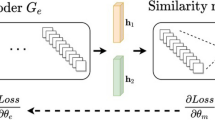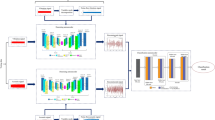Abstract
Accurate bearing fault classification is essential for the safe and stable operation of rotating machinery. The success of Machine Learning (ML) in fault classification is mainly dependent on efficient features and the optimal pre-defined hyper-parameters. Various hyper-parameter optimization (HPO) methods have been proposed to tune the ML algorithms’ hyper-parameters in low dimensions but ignore the hyper-parameters of Feature Engineering (FE). The hyper-parameter dimension is high because both FE and the ML algorithm contain many hyper-parameters. This paper proposed a new HPO method for high dimensions based on dimension reduction and partial dependencies. Firstly, the whole hyper-parameter space is separated into two subspaces of FE and the ML algorithm to reduce time consumption. Secondly, the sensitive intervals of hyperparameters can be recognized by partial dependencies due to the nonlinearity of the relationship between the hyperparameters. Then HPO is conducted in intervals to acquire more satisfactory accuracy. The proposed method is verified on three OpenML datasets and the CWRU bearing dataset. The results show that it can automatically construct efficient domain features and outperforms traditional HPO methods and famous ML algorithms. The proposed method is also very time efficient.










Similar content being viewed by others

References
Toma RN, Prosvirin AE, Kim JM (2020) Bearing fault diagnosis of induction motors using a genetic algorithm and machine learning classifiers. Sensors 20:1884
Wen L, Li X, Gao L (2021) A new reinforcement learning based learning rate scheduler for convolutional neural network in fault classification. IEEE Trans Ind Electron 68(12):12890–12900. https://doi.org/10.1109/TIE.2020.3044808
Xue Y, Zhang L, Wang B, Zhang Z, Li F (2018) Nonlinear feature selection using Gaussian kernel SVM-RFE for fault diagnosis. Appl Intell 48:3306–3331
Guo J, Yang L, Bie R, Yu J, Gao Y, Shen Y, Kos A (2019) An XGBoost-based physical fitness evaluation model using advanced feature selection and Bayesian hyper-parameter optimization for wearable running monitoring. Comput Netw 151:166–180
Klein A, Falkner S, Bartels S (2017) Fast bayesian optimization of machine learning hyper-parameters on large datasets. Artificial Intell Stat PMLR:528–536
Wang Z, Huang H, Wang Y (2020) Fault diagnosis of planetary gearbox using multi-criteria feature selection and heterogeneous ensemble learning classification. Measurement 173:108654
Zhang X, Zhang Q, Chen M, Sun Y, Qin X, Li H (2018) A two-stage feature selection and intelligent fault diagnosis method for rotating machinery using hybrid filter and wrapper method. Neurocomputing 275:2426–2439
Suo M, Zhu B, An R (2019) Data-driven fault diagnosis of satellite power system using fuzzy Bayes risk and SVM. Aerosp Sci Technol 84:1092–1105
Chen YQ, Fink O, Sansavini G (2017) Combined fault location and classification for power transmission lines fault diagnosis with integrated feature extraction. IEEE Trans Ind Electron 65:561–569
Ali MZ, Shabbir MNSK, Zaman SMK (2020) Single-and multi-fault diagnosis using machine learning for variable frequency drive-fed induction motors. IEEE Trans Ind Appl 56:2324–2337
Chen H, Jiang B, Lu N et al (2018) Deep PCA based real-time incipient fault detection and diagnosis methodology for electrical drive in high-speed trains. IEEE Trans Veh Technol 6:4819–4830
Wen L, Gao L, Li X et al (2021) Convolutional neural network with automatic learning rate scheduler for fault diagnosis. IEEE Trans Instrum Meas 70:1–12. https://doi.org/10.1109/TIM.2020.3048792
Du W, Tao J, Li Y et al (2014) Wavelet leaders multifractal features based fault diagnosis of rotating mechanism. Mech Syst Signal Process 43:57–75
Hu K, Jiang M, Zhang H (2021) Design of fault diagnosis algorithm for electric fan based on LSSVM and Kd-tree. Appl Intell 51:804–818. https://doi.org/10.1007/s10489-020-01830-0
Sun M, Wang H, Liu P, Huang S, Fan P (2019) A sparse stacked denoising autoencoder with optimized transfer learning applied to the fault classification of rolling bearings. Measurement 146:305–314
Xu G, Liu M, Jiang Z, Söffker D, Shen W (2019) Bearing fault diagnosis method based on deep convolutional neural network and random forest ensemble learning. Sensors 19:1088
Deng H, Diao Y, Wu W (2020) A high-speed D-CART online fault diagnosis algorithm for rotor systems. Appl Intell 50:29–41. https://doi.org/10.1007/s10489-019-01516-2
Wen L, Li X, Gao L (2020) A new two-level hierarchical diagnosis network based on convolutional neural network. IEEE Trans Instrum Meas 69:330–338
Huang H, Jia R, Shi X, Liang J, Dang J (2021) Feature selection and hyper parameters optimization for short-term wind power forecast. App Intell: 1-19 51:6752–6770. https://doi.org/10.1007/s10489-021-02191-y
Yangyang L et al (2019) Hyper-parameter optimization using mars surrogate for machine-learning algorithms. IEEE Transac Emerging Top Computa Intell 4:287–297
Qin AS, Mao HL, Hu Q (2021) Cross-domain fault diagnosis of rolling bearing using similar features-based transfer approach. Measurement 172:108900
Yang L, Shami A (2020) On hyper-parameter optimization of machine learning algorithms: theory and practice. arXiv preprint arXiv:2007.15745
Saufi SR, bin Ahmad ZA, Leong MS et al (2018) Differential evolution optimization for resilient stacked sparse autoencoder and its applications on bearing fault diagnosis. Meas Sci Technol 29:125002
Hutter F, Kotthoff L, Vanschoren J (2019) Automated machine learning: methods, systems, challenges, Springer Nature
Yao Q, Wang M, Chen Y et al (2018) Taking human out of learning applications: a survey on automated machine learning. arXiv preprint arXiv:1810.13306
Gao L, Ding Y (2020) Disease prediction via Bayesian hyper-parameter optimization and ensemble learning. BMC Research Notes 13:1–6
Balandat M, Karrer B, Jiang D et al (2021) BoTorch: a framework for efficient Monte-Carlo Bayesian optimization. Adv Neural Inf Proces Syst 6:1–34
Nayebi A, Munteanu A, Poloczek M (2019) A framework for Bayesian optimization in embedded subspaces. Intern Conf Mach Learn 5:4752–4761
Falkner S, Klein A, Hutter F (2018) BOHB: robust and efficient hyper-parameter optimization at scale. Intern Conf Mach Learn 12:1437–1446
Zhang W, Wu C, Zhong H, Li Y, Wang L (2021) Prediction of undrained shear strength using extreme gradient boosting and random forest based on Bayesian optimization. Geosci Front 12:469–477
Feurer M, Klein A, Eggensperger K et al (2018) Auto-sklearn: efficient and robust automated machine learning. Automate Mach Learn 36:113–134
Li S, Xing W, Kirby R et al (2020) Multi-fidelity Bayesian optimization via deep neural networks. Adv Neural Inf Proces Syst 33:145–156
Li C, De Oliveira JV, Cerrada M et al (2018) A systematic review of fuzzy formalisms for bearing fault diagnosis. IEEE Trans Fuzzy Syst 27:1362–1382
Zeng C, Yang L, Zhu AX (2017) Construction of membership functions for soil mapping using the partial dependence of soil on environmental covariates calculated by random forest. Soil Sci Soc Am J 81:341–353
Bernard C, Denuit M, Vanduffel S et al (2018) Measuring portfolio risk under partial dependence information. J Risk Insur 85:843–863
Zhou J, Li E, Yang S, Wang M, Shi X, Yao S, Mitri HS (2019) Slope stability prediction for circular mode failure using gradient boosting machine approach based on an updated database of case histories. Saf Sci 118:505–518
Allen T, Murray KA, Zambrana-Torrelio C et al (2017) Global hotspots and correlates of emerging zoonotic diseases. Nat Commun 8:1–10
Vanschoren J, Van Rijn JN, Bischl B et al (2013) OpenML: networked science in machine learning. SIGKDD Explo 15:49–60
Case Western Reserve University Bearing Data Center Website Available at: http://csegroups.case.edu/bearingdatacenter/home
Wu X, Jiang B, Zhong Y, et al (2020) Tolerant Markov boundary discovery for feature selection, proceedings of the 29th ACM international conference on Information & Knowledge Management: 2261-2264
Zhang R, Zhang Z (2020) Feature selection with symmetrical complementary coefficient for quantifying feature interactions. Appl Intell 50:101–118
Zhang L, Lu X (2018) New fast feature selection methods based on multiple support vector data description. Appl Intell 48:1776–1790
Schöne M, Kohlhase M (2020) Least squares approach for multivariate Split selection in regression trees, international conference on intelligent data engineering and automated learning: 41-50
Kumar S, Agrawal K, Mandan N (2020) Red wine quality prediction using machine learning techniques, international conference on computer communication and informatics: 1-6
Chen T, Wang Z, Yang X, Jiang K (2019) A deep capsule neural network with stochastic delta rule for bearing fault diagnosis on raw vibration signals. Measurement 148:106857
Zhang M, Wang D, Lu W, Yang J, Li Z, Liang B (2019) A deep transfer model with wasserstein distance guided multi-adversarial networks for bearing fault diagnosis under different working conditions. IEEE Access 7:65303–65318
Zhu Z, Peng G, Chen Y, Gao H (2019) A convolutional neural network based on a capsule network with strong generalization for bearing fault diagnosis. Neurocomputing 323:62–75
Zhang W, Li C, Peng G, Chen Y, Zhang Z (2018) A deep convolutional neural network with new training algorithms for bearing fault diagnosis under noisy environment and different working load. Mech Syst Signal Process 100:439–453
Liu H, Yao D, Yang J, Li X (2019) Lightweight convolutional neural network and its application in rolling bearing fault diagnosis under variable working conditions. Sensors 19:4827
Wu Y, Zhao R, Jin W, He T, Ma S, Shi M (2021) Intelligent fault diagnosis of rolling bearings using a semi-supervised convolutional neural network. Appl Intell 51:2144–2160
Acknowledgments
This work was supported in part by the Natural Science Foundation of China (NSFC) under Grants No.51805192, the National Key R&D Program of China under Grant number 2019YFB1704600 and sponsored by the State Key Laboratory of Digital Manufacturing Equipment and Technology (DMET) of Huazhong University of Science and Technology (HUST) under Grant No. DMETKF2020029.
Author information
Authors and Affiliations
Corresponding author
Ethics declarations
Conflict of interest
The authors declare that there is no conflict of interests regarding the publication of this paper.
Additional information
Publisher’s note
Springer Nature remains neutral with regard to jurisdictional claims in published maps and institutional affiliations.
Rights and permissions
Springer Nature or its licensor holds exclusive rights to this article under a publishing agreement with the author(s) or other rightsholder(s); author self-archiving of the accepted manuscript version of this article is solely governed by the terms of such publishing agreement and applicable law.
About this article
Cite this article
Ye, X., Gao, L., Li, X. et al. A new hyper-parameter optimization method for machine learning in fault classification. Appl Intell 53, 14182–14200 (2023). https://doi.org/10.1007/s10489-022-04238-0
Accepted:
Published:
Issue Date:
DOI: https://doi.org/10.1007/s10489-022-04238-0



